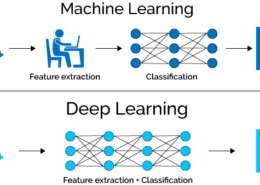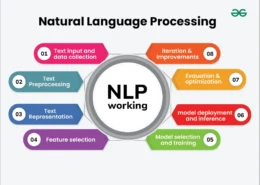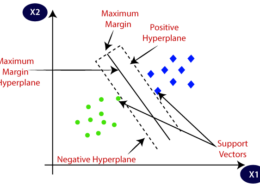Machine Learning (ML) and Deep Learning (DL) are both subfields of artificial intelligence (AI), but they differ in complexity, approach, and applications. Machine Learning (ML) Definition: A subset of AI that enables computers to learn from data and make decisions without being explicitly programmeRead more
Machine Learning (ML) and Deep Learning (DL) are both subfields of artificial intelligence (AI), but they differ in complexity, approach, and applications.
Machine Learning (ML)
- Definition: A subset of AI that enables computers to learn from data and make decisions without being explicitly programmed for each task.
- Algorithms: Uses a variety of algorithms such as linear regression, decision trees, support vector machines (SVM), k-nearest neighbors (KNN), and ensemble methods.
- Feature Engineering: Requires manual feature extraction and selection. Domain knowledge is often needed to determine the most relevant features.
- Data Requirements: Generally performs well with smaller datasets.
- Complexity: Simpler models and algorithms. Easier to interpret results.
- Computation: Less computationally intensive compared to DL.
- Applications: Fraud detection, spam filtering, recommendation systems, and simple classification tasks.
Deep Learning (DL)
- Definition: A subset of ML that uses neural networks with many layers (deep neural networks) to model complex patterns in large datasets.
- Algorithms: Primarily uses neural network architectures, such as convolutional neural networks (CNNs), recurrent neural networks (RNNs), and transformers.
- Feature Engineering: Automates feature extraction through multiple layers of abstraction. Minimal manual intervention needed.
- Data Requirements: Requires large amounts of labeled data to perform effectively.
- Complexity: More complex models with many parameters. Can capture intricate patterns and relationships.
- Computation: Highly computationally intensive. Often requires specialized hardware like GPUs or TPUs.
- Applications: Image and speech recognition, natural language processing, autonomous driving, and other tasks involving complex data and patterns.
Key Differences
- Structure and Complexity:
- ML: Simpler models, often interpretable.
- DL: Complex, multi-layered neural networks, less interpretable.
- Data Requirements:
- ML: Can work with smaller datasets.
- DL: Needs large datasets to achieve good performance.
- Feature Engineering:
- ML: Manual feature engineering is crucial.
- DL: Features are learned automatically from the data.
- Computation:
- ML: Less computationally demanding.
- DL: Requires significant computational power and resources.
- Use Cases:
- ML: Suitable for simpler tasks and applications.
- DL: Ideal for tasks requiring analysis of complex and high-dimensional data.
In summary, while ML encompasses a wide range of algorithms and techniques suitable for various tasks, DL specifically focuses on neural networks with deep architectures to handle more complex and large-scale data-driven tasks.
4o




Difference between Supervised learning and reinforcement learning Supervised learning and Reinforcement learning both are part of machine learning. In Supervised learning, we train the model using the dataset that includes both correct inputs and their correct outputs. The goal of this model is to lRead more
Difference between Supervised learning and reinforcement learning
Supervised learning and Reinforcement learning both are part of machine learning.
Characteristics of Supervised Learning
Characteristics of Reinforcement Learning
Key Differences Between Supervised Learning and Reinforcement Learning
While both supervised learning and reinforcement learning are pillars of machine learning, they differ significantly in methodology, application, and the nature of the learning process.
Methodology
Applications
Learning Process
See less